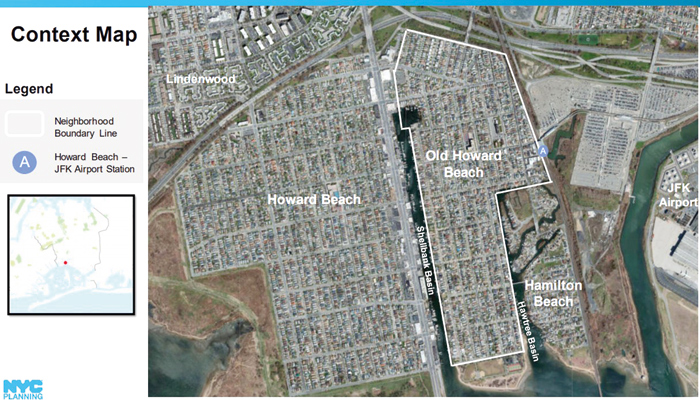Photo Courtesy of Google
Comptroller Stringer’s plan calls for tuition-free CUNY community colleges, such as LaGuardia Community College in Long Island City.
By Forum Staff
Public review for Zoning for Coastal Flood Resiliency–newly proposed citywide zoning rules that would result in buildings that are better able to withstand and recover from major disasters and sea level rise and which will also translate to lower flood insurance costs—has begun, City Planning Commission Chairwoman Marisa Lago announced Monday.
According to City Planning, ZCFR reinforces one of the most important lessons from Superstorm Sandy: Strong building codes make a big difference.
Currently, buildings are restricted by zoning regulations that do not take resiliency into account and thus force New Yorkers to choose between interior space and resiliency improvements. ZCFR will make it easier for buildings to meet or exceed modern resiliency codes without sacrificing their basement, for example, by adding some much-needed zoning flexibility.
Critically, the proposal will limit construction of new nursing homes in high-risk areas because of their vulnerable residents, Planning officials noted.
New York City has 520 miles of coastline, making many neighborhoods vulnerable to flooding during storm events and sea level rise. The proposed rules cover an area that is home to 800,000 New Yorkers, more people than live in Boston and two times as many as in New Orleans. Because the proposal is a citywide text amendment, all 59 community boards and all five borough presidents are required to weigh in on the proposal.
DCP is also releasing “Floodplain by the Numbers,” a report highlighting the long-term recovery progress and resiliency challenges facing the City’s diverse waterfront communities, including the fact that homes built prior to flood-resistant codes suffered higher average costs more than double those constructed to modern resiliency standards.
According to City Planning officials, ZCFR would improve and make permanent resilient zoning provisions initially put in place to help the City recover from Sandy. Since 2016, planners at the Department of City Planning have spoken with about 3,000 New Yorkers at more than 225 events, including with elected officials, community boards, civic associations, non-profits, architects and engineers, garnering ideas and feedback from the public to develop and strengthen the proposal.
Visit https://www1.nyc.gov/site/planning/plans/flood-resilience-zoning-text-update/flood-resilience-zoning-text-update.page for more info on Zoning for Coastal Flood Resiliency.
The launch of the seven-month public review process starts the clock for ZCFR, as well as the three neighborhood-specific actions. ZCFR will go to all 59 Community Boards for review, followed by the five Borough Presidents and Borough Boards. The three neighborhood-specific actions will only go before their respective local Community Boards and Borough Presidents. ZCFR and the three local actions will then go to the City Planning Commission for a public hearing and vote, followed by the City Council.
In addition to ZCFR, DCP is also starting public review for zoning changes in three neighborhoods as part of DCP’s Resilient Neighborhood Initiative—Gerritsen Beach and Sheepshead Bay in Brooklyn, and Old Howard Beach in Queens.
These actions address resiliency challenges that are specific to the conditions found in these areas, as in Old Howard Beach where zoning changes are proposed to limit the construction of attached homes, which are harder to retrofit and elevate than detached homes because of their shared walls.

